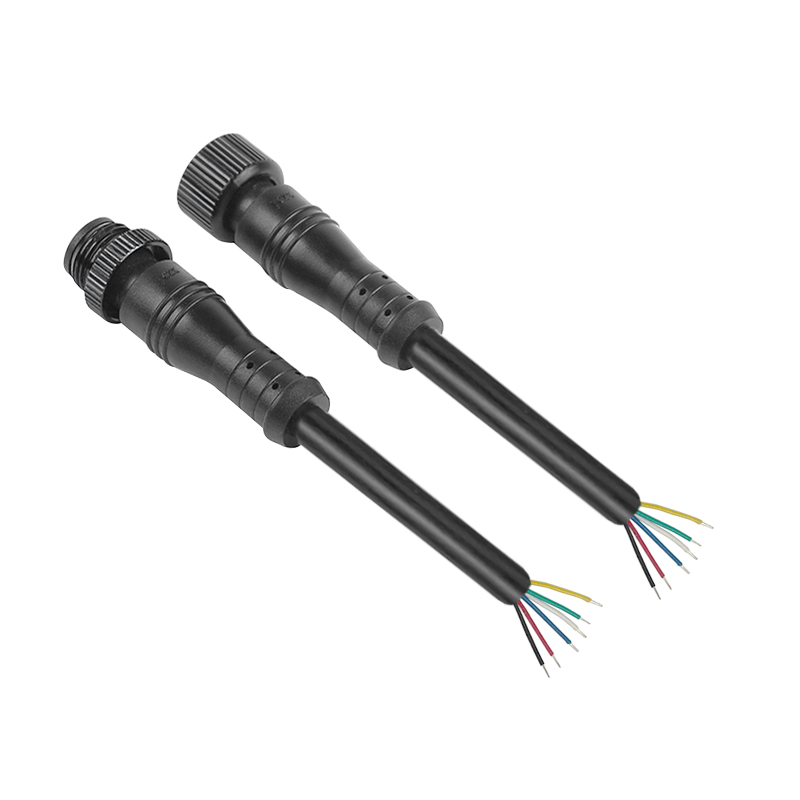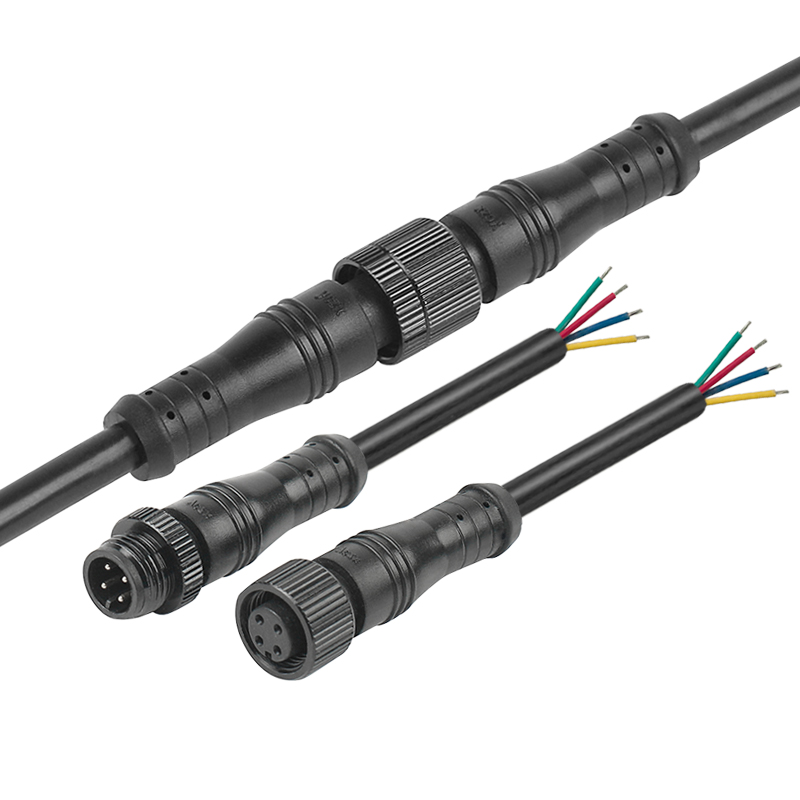1. Introduction to M12 Metal Connectors
M12 connectors are the industry standard for sensor and device connectivity in harsh environments. These 12mm diameter circular connectors feature:
Threaded metal housing (typically stainless steel or brass)
4-8 pin configurations
IP67/IP68/IP69K protection ratings
Ethernet and fieldbus compatibility
Vibration-resistant design
First introduced in factory automation, M12 connectors now dominate industrial networks due to their compact size and reliable performance.
2. Technical Specifications
2.1 Mechanical Properties
Housing Material: 304/316 stainless steel or nickel-plated brass
Thread Size: Metric M12×1.0 standard
Operating Temperature: -25°C to +85°C (extended range available)
Mating Cycles: 100+ (high-end models exceed 500 cycles)
2.2 Electrical Characteristics
Voltage Rating: 30-60V AC/DC
Current Capacity: 4A standard (16A power versions available)
Data Transmission: Up to 10Gbps for Ethernet variants
Shielding: 360° EMI protection for signal integrity
2.3 Coding Types
A-Code: Sensors/DC power
B-Code: Profibus/fieldbus
D-Code: 100Mbps Ethernet
X-Code: 10Gbps Ethernet
S-Code: AC power applications
3. Primary Applications
3.1 Industrial Automation
IO-Link sensors: A-coded connectors for smart sensors
PLC systems: D-coded Ethernet connections
Robotic end effectors: Vibration-proof power/signal
3.2 Automotive Manufacturing
Welding robots: High-temperature resistant versions
Assembly line sensors: Oil/coolant resistant models
3.3 Process Control
Flow meters: IP69K washdown versions
Level sensors: Submersible IP68 configurations
3.4 Transportation
Railway sensors: Shock/vibration certified
EV charging: Liquid-cooled power variants
4. Selection Guide
4.1 Coding System Selection
| Application | Recommended Coding |
|---|---|
| Standard sensors | A-Code |
| Industrial Ethernet | D-Code/X-Code |
| AC power devices | S-Code |
| Fieldbus networks | B-Code |
4.2 Material Selection
Stainless steel: Corrosive environments
Brass with plating: Cost-effective industrial use
Plastic composite: Lightweight applications
4.3 IP Rating Guide
IP67: Most factory environments
IP68: Permanent submersion
IP69K: High-pressure cleaning
5. Installation Best Practices
5.1 Proper Termination
Use manufacturer-recommended crimp tools
Maintain proper cable bend radius
Apply thread sealant for IP68 applications
5.2 Maintenance Procedures
Annual contact inspection
Periodic torque checks on threaded couplings
Immediate replacement of damaged seals
6. Emerging Trends
Single Pair Ethernet (SPE): New T1 coding for IIoT
Hybrid power/data: Combined 4-pin power+2-pin data
Push-pull variants: Tool-less connections for maintenance
Smart connectors: Integrated diagnostic LEDs
Conclusion
M12 metal connectors provide the perfect balance of compact size and rugged performance for industrial networks. Their standardized coding system ensures proper mating while various materials and IP ratings address diverse environmental challenges. As Industry 4.0 advances, M12 connectors continue evolving with higher data rates and smarter features.




